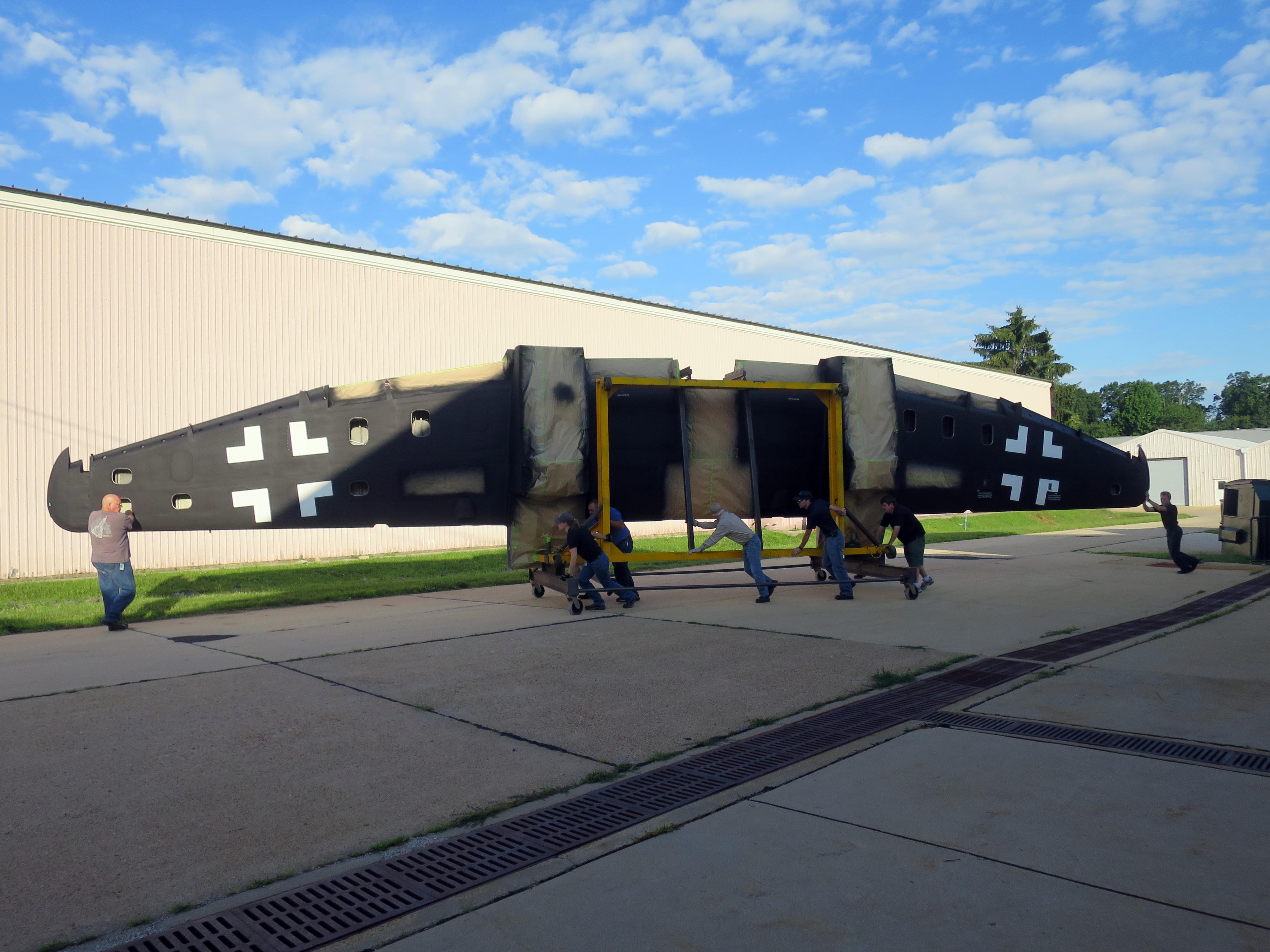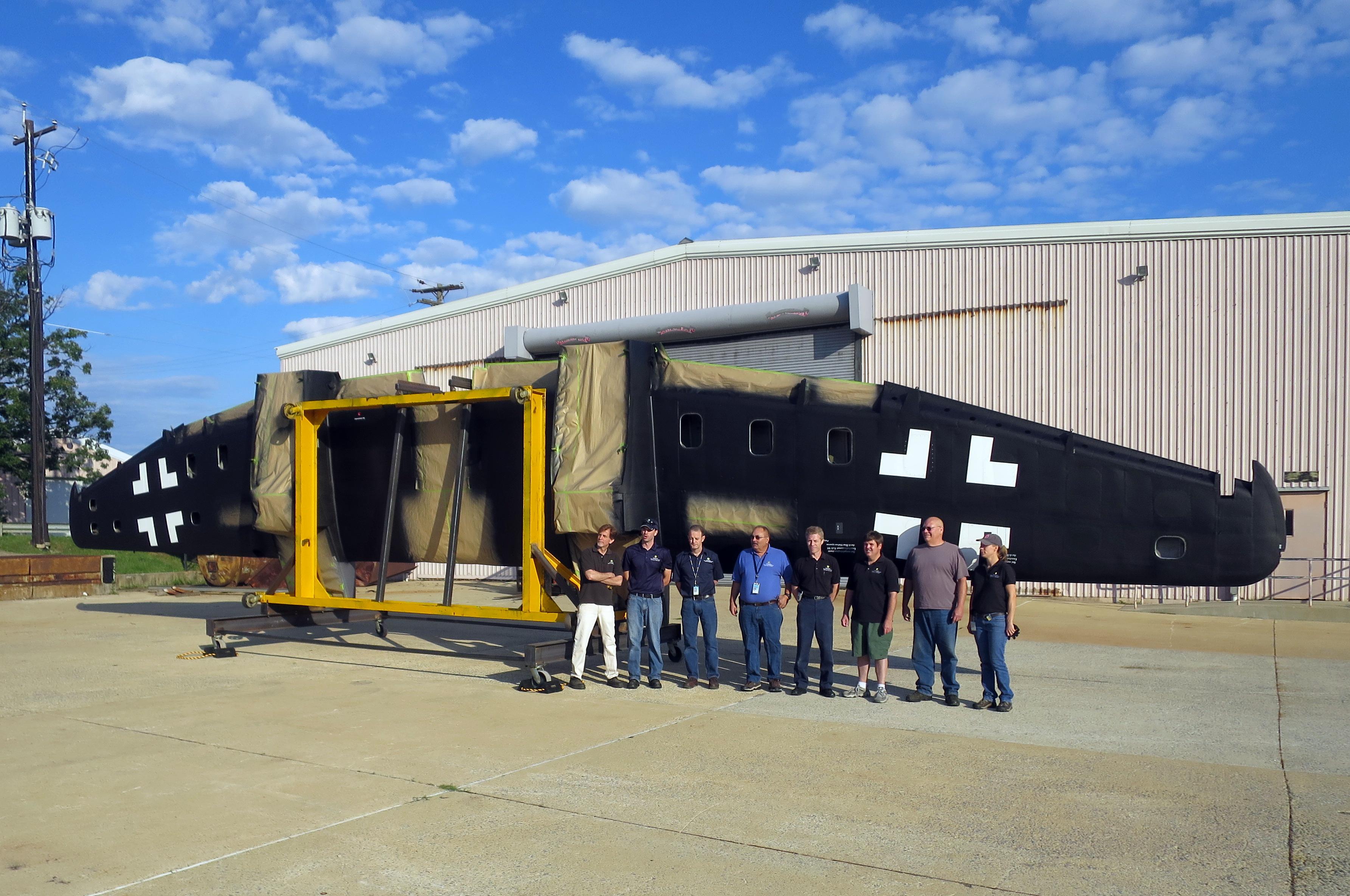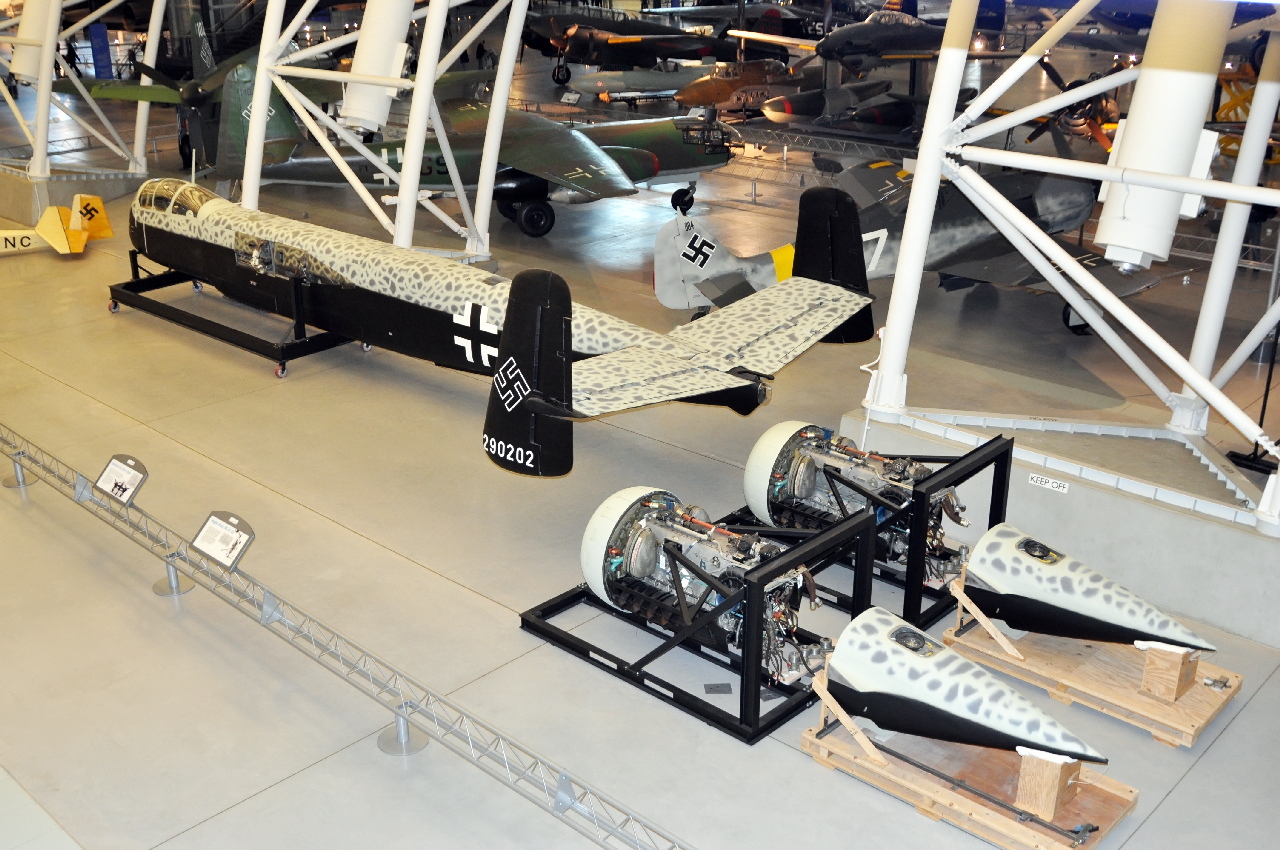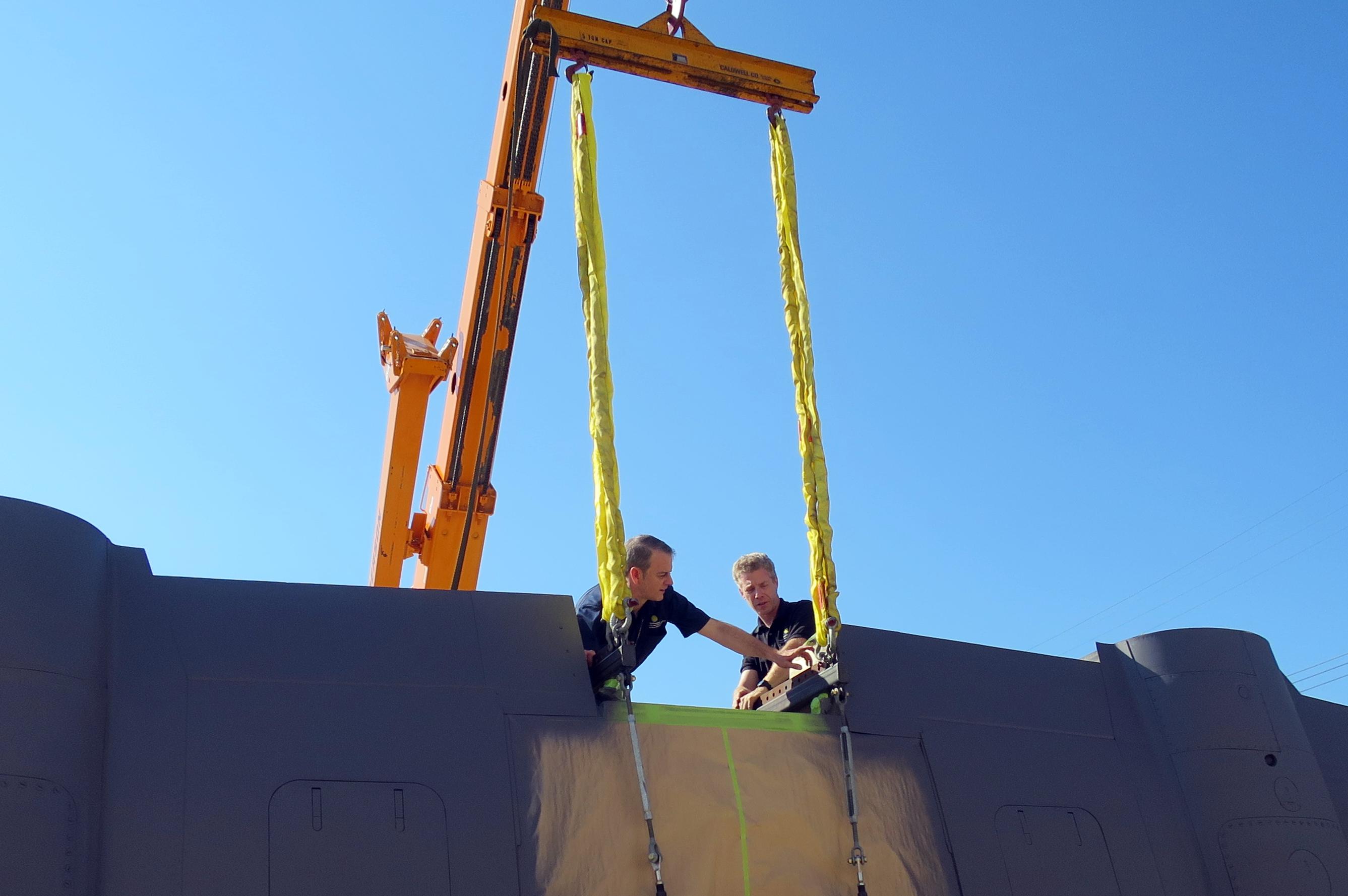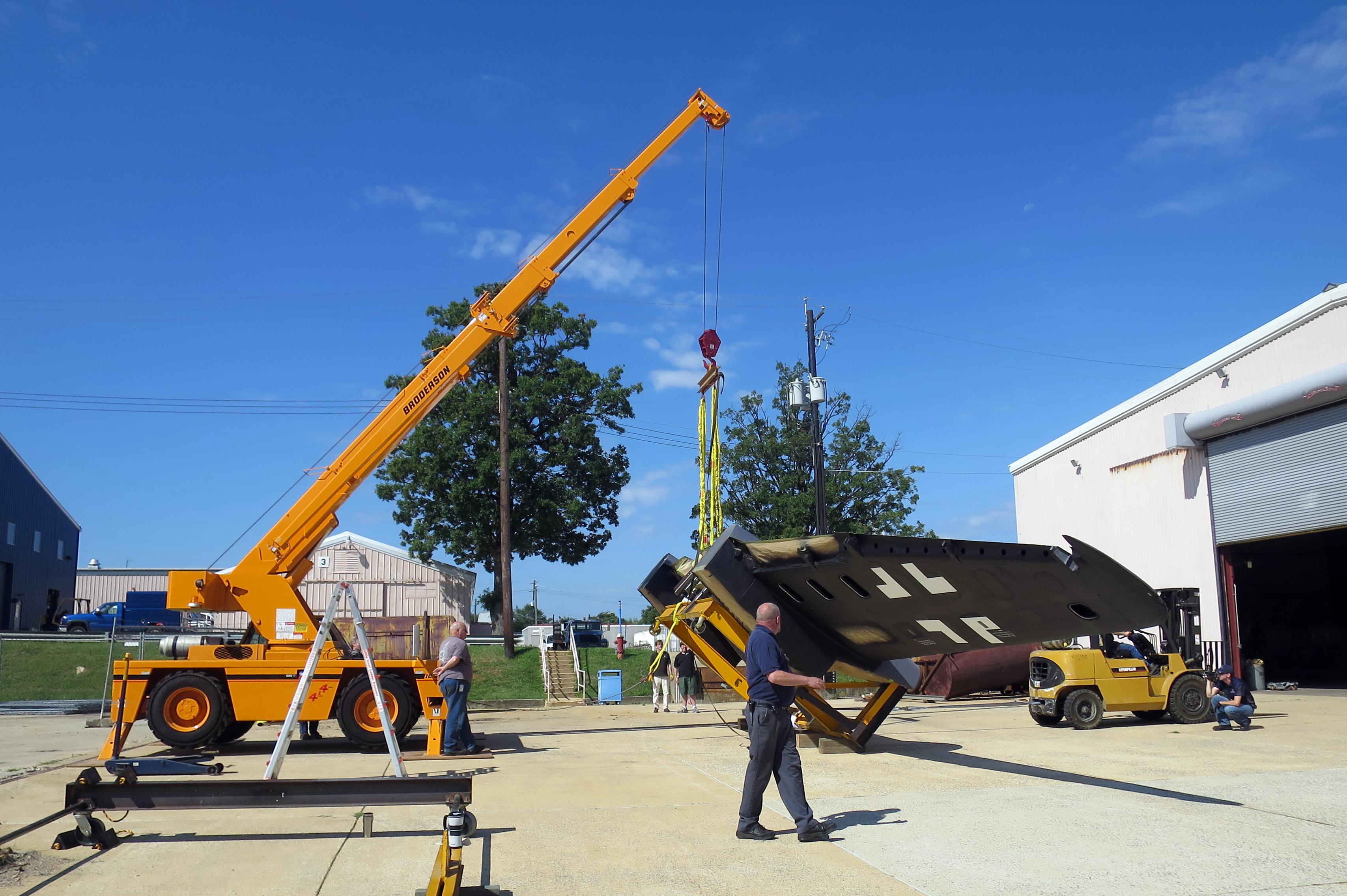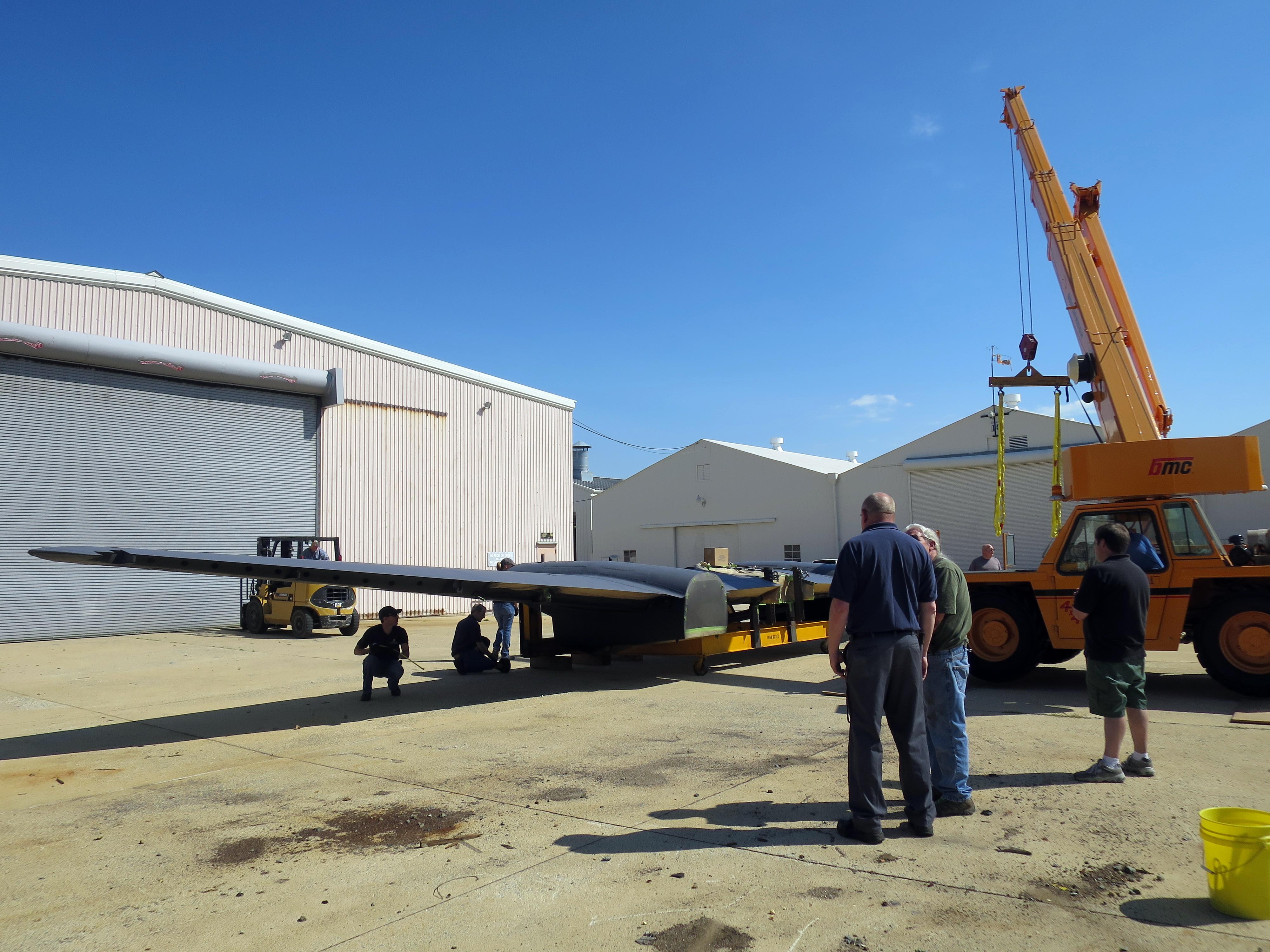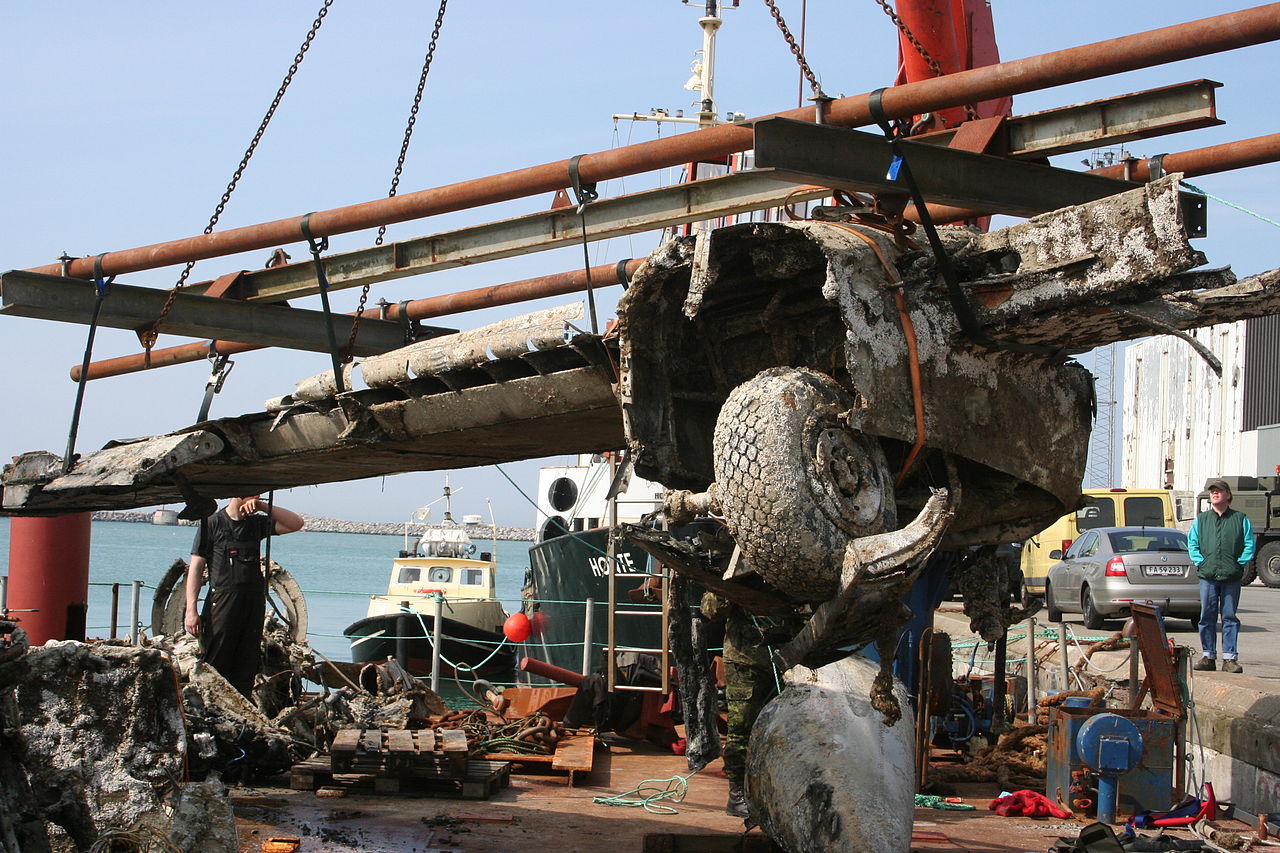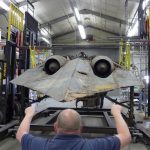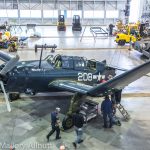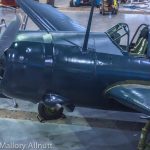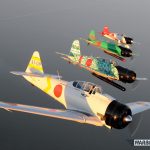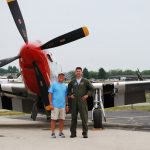WarbirdsNews has some exciting news coming from the Smithsonian’s National Air & Space Museum, and some fantastic photographs to share with much thanks to NASM’s press officers. The restoration crew at the Paul E. Garber Restoration Facility in Silver Hill, Maryland has finished their work repairing the wings for the museum’s unique Heinkel He-219 A-2 Uhu, Wk.Nr.290202. In mid-July, the team prepared the freshly repainted wings for shipment to the Udvar-Hazy Center in Chantilly, Virginia. For the first time in years, they took the long-hidden 63′ span airfoil outside, mounted to its massive custom steel frame, and rotated the whole assembly 90 degrees, until it lay in a more natural, horizontal configuration. It is now more or less ready for loading onto a flat-bed truck for the forty mile journey to its final home.
The Heinkel He-219 was the only German aircraft from WWII built specifically from the ground up as a night fighter. The Northrop P-61 Black Widow was the only other dedicated night fighter to serve in WWII. Interestingly, the He-219 was the first aircraft to come with a steerable nose wheel, and had the world’s first operational ejector seats. It’s principal armament consisted of a set of cannon mounted in the aft fuselage which fired obliquely in an upwards direction. The aircraft would fly into the RAF bomber streams at night, guided by its radar, and then sneak up under the wings of a usually unsuspecting aircraft. It would then unleash the fury of its guns at near point-blank range, with almost universally fatal results for the stricken warplane and her crew. This weapons system, known to the Germans as “Schräge Musik” (Jazz Music), was extremely effective, and it was not unheard of for a He-219 or other similarly equipped Luftwaffe night fighter with an expert crew to shoot down a dozen or so Allied bombers in one evening, such was their lethality.
NASM’s He-219 belonged originally to Nachtjagdgeschwader 1 in Jutland, Denmark. A special US Army Air Force unit known as “Watson’s Whizzers” took possession of her shortly after the war ended in Europe, and flew the fighter to Cherbourg, France. Here she boarded the British carrier HMS Reaper alongside twenty other captured Axis aircraft. The ship brought its precious cargo to the USA for evaluation. Wk.Nr.290202 ended up at Freeman Field in Indiana, bearing the foreign equipment number FE-614, which eventually changed to T2-614. Testing lasted into 1946, after which the He-219 ended up in storage at Park Ridge, Illinois. Eventually, the Smithsonian acquired the ‘219, and boxed her up as components for shipment to their facilities in the Washington, DC area. She sat quietly gathering dust until about ten years ago, when the restoration process began.
The ultra-rare, German night-fighter’s fuselage and engines are already complete, and have been on display at the Udvar-Hazy Center for some years now (see above). The wings will soon join them at Udvar-Hazy, but will first go into the Mary Baker Engen Restoration Hangar to receive their final layer of green/blue Wellenmuster (wave pattern) camouflage. The airframe’s final assembly will take place later this year, and then the Heinkel will go on show to the public for the first time since just after WWII.
Rotating the nearly 5,000lb He-219 wings on their roughly 1,000lb maintenance stand took a dozen or so museum workers three hours to shift from its vertical position, to horizontal. The wings had been mounted vertically to more easily facilitate painting.
Only one major item remains missing, the set of nose-mounted FuG 220 radar antennae. The radar array became separated from the airframe, probably before she arrived in NASM’s care. The museum has managed to locate an original FuG 220 antenna array in Europe, and secured their loan allow NASM’s world-class restoration team to reverse engineer a newly manufactured replica.
Only one other substantially complete He-219 survives in preservation. A team of divers raised this example in pieces from off the Danish coast a couple of years ago. You can see from the photograph below that it is in pretty ragged shape. The aircraft is currently undergoing preservation at a museum in Jutland. You can see further photographs from that recovery, as well as some more recent restoration images HERE.







